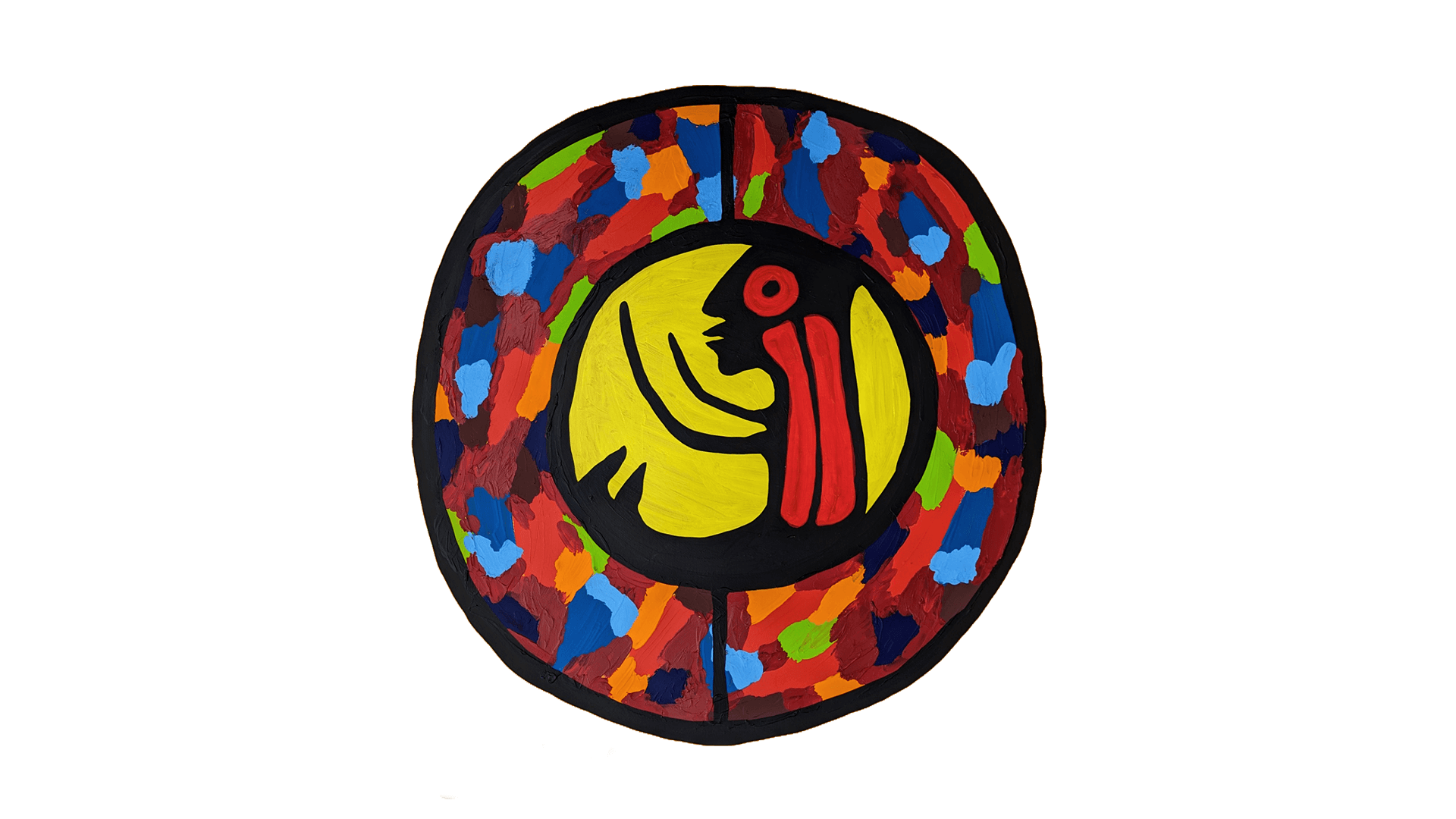In 1978, the inaugural exhibition at Ontario North Now gallery at Ontario Place was an exhibition of Morrisseau’s work.
1978
Image of the cover of the catalogue for the exhibition.
Opening page with image of Astral Shaman Guide I & II, 1978.
News report about the opening of the Ontario Place’s new pavilion, Ontario North Now, and a display of paintings by Morrisseau.
Norval Morrisseau at Tom Tomson Shack Artist Residency (McMichael Gallery, Kleinberg), 1979. Photo courtesy of CP Images.
1979
Morrisseau’s artist residency at the McMichael in 1979 demonstrates the apex of his artistic career. This was the same year that the Art of Norval Morrisseau (Lister Sinclair and Jack Pollock, eds) was published. This photograph demonstrates the artist at work in a studio.
In a Maclean’s magazine feature article by Christopher Hume about the rise of Indigenous arts in Canada, the journalist notes,
Nobody enjoys Morrisseau more than Morrisseau. He is a great artist and he knows it.
"The New Age of Indian Art", Maclean's, p 23.
This work was painted after Morrisseau’s spiritual awakening that saw him embrace the Eckankar spiritual teachings. This unusual work combines Anishinaabe stories with Eckankar teachings, combining land and sky panels to visualize connections between these two spiritual understandings.
The painting shows the upper and lower realms of Anishinaabe cosmology. The upperworld includes the Thunderbird, the two-headed medicine snake, and heaven people. The lower world includes a shaman figure standing on a sacred bear and a loon, connected to fish, birds, and other sacred beings whose head strates both realms. The use of the all-seeing eye found in this work expresses some of the changes Morrisseau makes to his visual language following his spiritual move to Eckankar.
Norval Morrisseau, The Light is the Way, 1979.
Morrisseau's exhibition at Ontario Place in Toronto, ON in 1984.
Norval Morrisseau, The Sea Prince, 1981.
A Pollock Gallery solo exhibition of Morrisseau’s art in 1981 included The Sea Prince, which shows water beings and fish with lines of spiritual communications flowing from their mouths. The show was reviewed by Globe and Mail art critic John Bentley Mays who glowingly states:
In his visionary lakes swim mighty fish, armed with bolts of spiritual lightening.
Globe and Mail, 9 July 1981.
Androgyny
1983
In 1983, Morrisseau called Prime Minister Pierre Elliot Trudeau’s office about his wish to offer the gift of a mural, subsequently titled Androgyny. He also offered the Prime Minister a set of new limited-edition porcelain plates titled Children of Mother Earth designed to market his art to new audiences.
Morrisseau offered Androgyny as a gift to the Canadian people and it was unveiled April 15, 1983 in the main entrance of the headquarters of the Indigenous and Northern Affairs Canada Terrasses de la Chaudiere, in Gatineau.
Unveiling of Androgyny, Gatineau QC, April 15, 1983, Indigenous Art Centre Archives, CIRNAC, Ottawa.
Morrisseau touches up this monumental work prior to unveiling ceremony. Androgyny remains one of Morrisseau's masterworks that continues to captivate viewers.
This work depicts boldly coloured images of animals, humans, and spirit beings living in an interconnected universe, where layers of storytelling, and ways of knowing are part of all of us. Balance, relationality and considerations of future generations are central to the message of this painting.
Morrisseau’s gift inspires a new way of considering Canada’s relations with land and Indigenous peoples.
Norval Morrisseau, Androgyny, 1983.
The house of invention gave me colour.
Norval Morrisseau: Return to the House of Invention, Norval Morrisseau, Toronto: Key Porter, 2005.
This quote by Norval Morrisseau is read by Logan Fiddler, Great-grandson of Norval Morrisseau, 2023.
